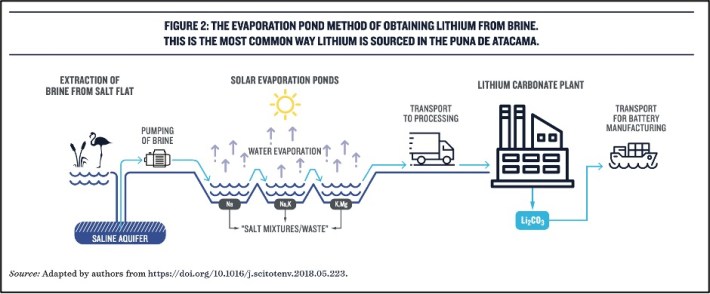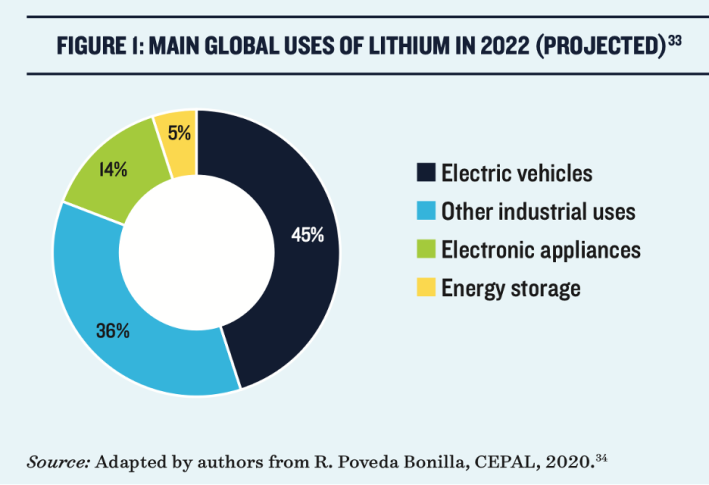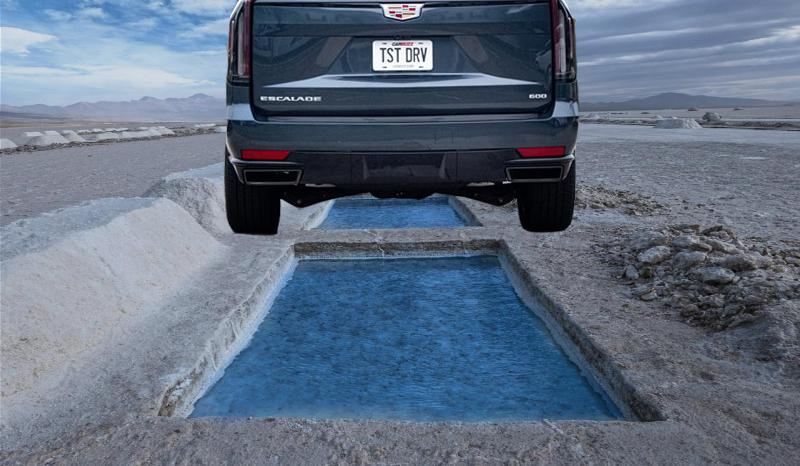Lithium mining is having a devastating impact on local and indigenous communities as well as ecosystems around the globe, and reducing dependence on automobiles must be a key part of our strategy to curb the damage, a new report says.
According to a new analysis from the Natural Resources Defense Council, the rapid expansion of the electric vehicle battery market is driving a boom in demand for lithium carbonate, a synthesized compound whose key component — lithium itself — is derived from just a tiny handful of natural deposits located throughout the world. By 2030, experts expect global lithium carbonate demand to increase sixfold — and when it does, and a whopping 79 percent of that massive market will be consumed by automakers alone.
That's particularly alarming for the Puna de Atacama region, which has become known in the battery industry as the global "Lithium Triangle" — much to the chagrin of local and indigenous communities. Located at the junction of Argentina, Chile and Bolivia, it's a fragile ecosystem that's home to more than 58 percent of the world's supply of the rare metal, and has become a hotbed for a destructive mining process known as brine evaporation, wherein operators drill under the area's spectacular wetland salt flats to pump out a lithium-rich slurry, damaging the habitats of three out of the world's six total species of flamingos as well as countless other living creatures which call the landscape home. The saline mixture then spends over a year sitting in a series of "evaporation pools," essentially wasting all the water involved.
Battery makers brag that producing a battery for a Tesla Model 3 through salt-flat drilling uses the equivalent amount of the water to make a nine-ounce steak or "half a pair of jeans," and add that the water within the brine isn't suitable for drinking or agricultural uses anyway. But the NRDC report authors say that "willfully ignores" the cycle by which the brine aquifers help supply surrounding freshwater aquifers, a process which scientists don't fully understand — beyond that fact that disruption of the cycle is already causing fresh water sources to vanish.
Indigenous people have lived and farmed the Puna de Atacama region since at least 10,000 B.C., but their millennia-old practices are being upended by the mining industry, stoking tensions that sometimes precipitate violent altercations with police and state officials.
"An entire [water] vein that supplied the town, which was fundamental to the livestock and agricultural lifestyle of residents, dried up completely," said Ezequiel Carrizo, an Argentinian activist with Fiambalá Despierta (Fiambalá Awakened) and other groups. "Today there’s nothing there."

Brine extraction isn't the only way to get the lithium we need to supply the global battery market, of course — which is part of why the NRDC recommends a total moratorium on the process. The rare earth metal can be sourced from geothermal energy production, removed through an electrochemical technique known as "direct lithium extraction" that doesn't involve evaporation, or even recycled from existing batteries.
Simply switching to a friendlier means of harvesting lithium, though, wouldn't curb the planet's growing appetite for it, which the International Energy Agency says will increase almost 90 percent over the next two decades if countries meet their ambitious vehicle electrification goals, along with other policies outlined under the Paris Climate accords that will require more battery production.
That number could be even bigger if countries like the US over-rely on swapping gas tanks for batteries at the expense of less resource-intensive decarbonizing strategies, like biking, walking, and transit — or if massive electric vehicles with massive batteries, like the climate contradiction on wheels known as the electric Hummer, take off in U.S. markets.
"Mining for rare metals should be our absolute last resort to end climate change," said James Blair, an assistant professor at California State Polytechnic University Pomona and the co-author of the report. "We need to reduce the need for new batteries. There’s just so much that can be done besides depending on extractive industries."

Blair emphasizes that, of course, some electric car battery production is critical to ending the climate crisis, and that the social costs of mining in places like Puna de Atacama must be mitigated through better policy, like well-structured community benefits agreements and better environmental monitoring. (The report lists eight deeply nuanced recommendations, which we highly recommend you read for a broader understanding of this complex issue.)
But he says the foundational problem of demand for batteries needs to be addressed at a policy level, too — and that relying on individual consumers to simply make their electric cars last as long as possible won't cut it.
"We should be thinking about prioritizing public transit, biking, walking, and frankly, mobility justice," he added. "If we're going to place a priority on the electrification of transportation, that should go towards things like public buses, or trucks that are causing diesel pollution...It’s really tragic that we have such a dependency on single passenger vehicles."
With the lithium mining industry gaining steam around the world — including on U.S. soil — Blair says it's more important than ever that policymakers think beyond the battery, while simultaneously paying close attention to the mines that must remain and centering the needs of vulnerable human and natural populations.
"There was a popular slogan among protestors at COP26 in Glasgow: 'We can’t mine our way out of the climate crisis,'" he said. "And that's absolutely true."






